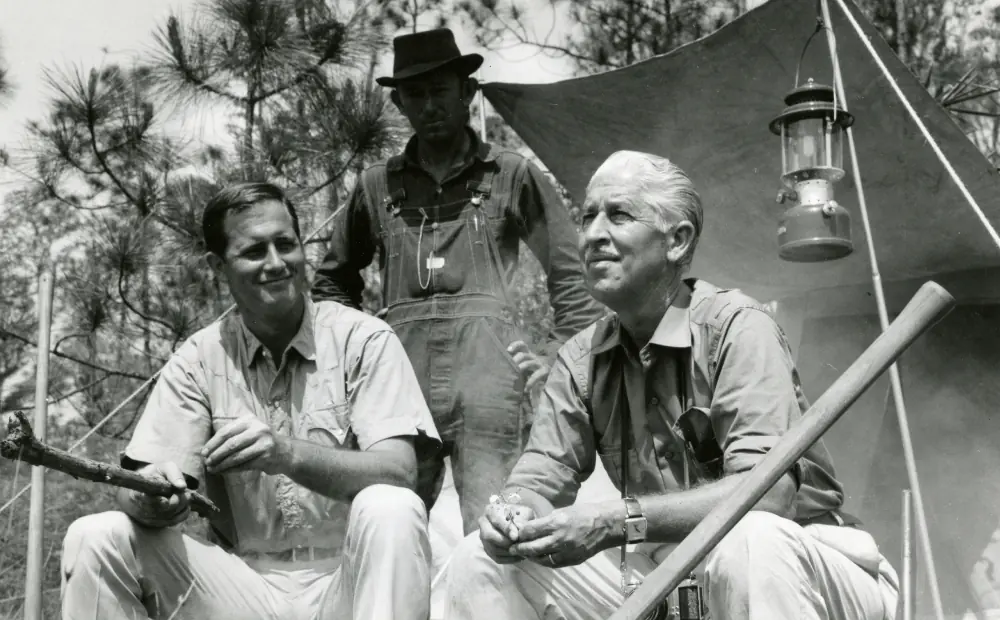Story and images by American Prairie Foundation
Thundering herds of bison once roamed the immense prairies of North America before their populations were brought to the brink of extinction. Today, thanks to the efforts of tribal programs, conservation agencies and organizations, and commercial producers, these iconic animals are returning to small pockets of their once vast range.
American Prairie works to restore bison population
But there are still few truly wild bison living and interacting with their environment as their forebears once did.
“Bison are maybe the most important species in this ecosystem in terms of being an ecosystem engineer,” said Dr. Daniel Kinka, director of rewilding at the American Prairie Foundation. “And even though there are a lot of bison in this country, they’re all behind fences. They take up a very, very small fragment of their historic range and this is a significant loss.”
American Prairie’s bison herd was established in 2005 with the transfer of 16 animals from South Dakota’s Wind Cave National Park. Those bison were descendants of the 14 animals furnished by the American Bison Society in 1913 to establish the park.
Where did the American Bison Society find the bison to create their herd (the first conservation herd in the country)? Most were rounded up by William Hornady when he traveled to central Montana to see only a few hundred bison remained from the immense herd that once covered the Great Plains.

Bison’s great impact on prairie ecosystem
Bison have been a critical part of the prairie’s ecosystem for thousands of years. As a keystone species, their restoration and prosperity unlock a number of wide-ranging positive impacts for many other systems and species on the prairie.
Bison wallows (the spots where they roll around to take dust baths and shed their thick winter hide) create depressions in the ground where water can collect, creating habitat for all sorts of birds, bugs and plant life. Bison fur is also twice as warm as sheep’s wool and is used by many species of prairie birds to line their nests, protecting their eggs from the unpredictable and often extreme weather of the northern Great Plains. In the winter, bison use the big muscles in their necks and front shoulders to plow through snow, cutting pathways and unearthing plants for other grazers like pronghorn.
“What we’re seeing so far is the species richness within our bison pastures going up. And we’re also starting to see more woody vegetation along the creeks,” said Scott Heidebrink, American Prairie director of landscape stewardship.
“Within large pastures, where there’s only a perimeter fence, bison do very well. They’re moving three to three and a half miles a day on average across an entire year. So, they’re essentially rotating themselves, not necessarily staying in one area for long periods of time,” Heidebrink said.
This behavior has also impacted the landscape of the American Prairie.
“What that’s doing is creating different heights of vegetation, which different birds, different animals, prairie dogs, pronghorn, mice and voles use at different times of the year. Some species will only use certain heights of vegetation, so those bison are creating that without us trying to control them,” Heidebrink said.

Collaboration key to bison’s success
The 16 animals that were released onto American Prairie in 2005 represented a return nearly a century in the making. Twenty years later, the American Prairie herd hovers between 900 and 1,000 animals, divided across two properties where they roam a combined total of nearly 60,000 acres.
The story of bison conservation and restoration is a story of collaboration. By partnering with conservation organizations and the Intertribal Buffalo Council, American Prairie has distributed more than 550 bison to various tribes and conservation herds across the United States. The American Prairie herd has also benefited from those partnerships. In 2023, the organization welcomed 80 animals from the Laramie Foothills bison herd in Colorado and from the Fort Belknap Aaniiih Nakoda community herd in Montana.
Those new additions were descendants of Yellowstone National Park bison, further improving the genetic diversity and integrity of American Prairie’s herd.
“The calves born in 2024 represent a mixing of all of these lineages — from Wind Cave National Park in South Dakota to Elk Island National Park in Alberta, Canada,” Heidebrink said. “That’s exciting because it represents the future of American Prairie’s herd — highly genetically diverse and continuing to make significant contributions to bison recovery and the long-term survival of the species.”
Learn more about the history of bison in North America with this video from the National Wildlife Federation.
And stay tuned for bison on Mutual of Omaha’s Wild Kingdom Protecting the Wild. Go behind the scenes of the upcoming episode.












